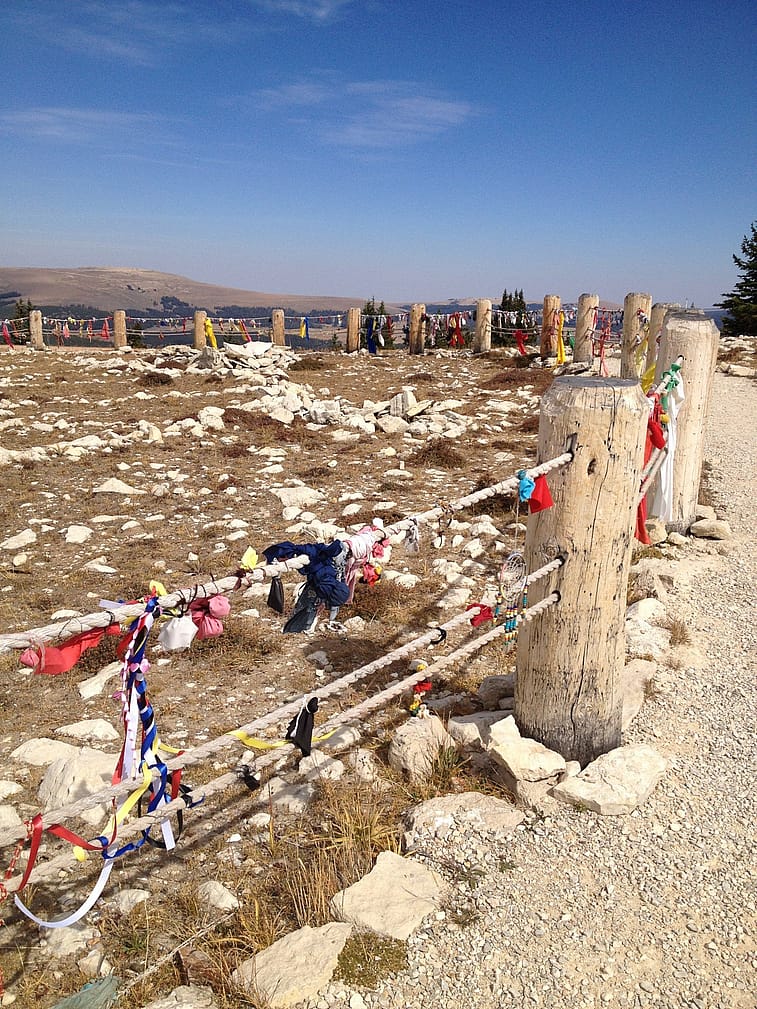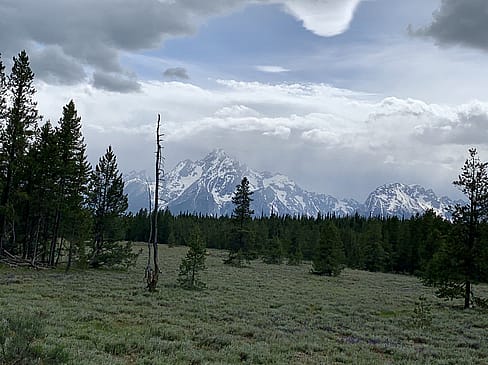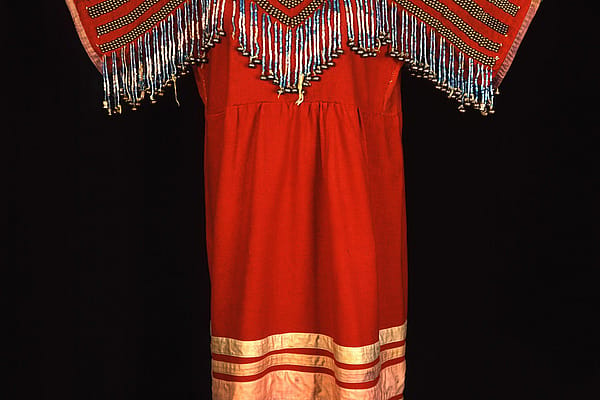
Sacred Sites, Places, & Landscapes: All You Need To Know
Sacred landscapes are the foundation of cultural resilience. Stories of sacred environments are weaved into the cosmologies, world views, and cultural practices of Indigenous peoples.
Indigenous groups’ religious, spiritual, medicinal, and cultural practices are inherently linked to specific geographical locations. Knowledge of these places and their meaning are passed down from generation. These locations are places such as natural landmarks (mountain ranges, bodies of water, etc.); areas where significant events happened (religious sites, battles, etc.); and landscapes that produce raw materials and food (buffalo jumps). Along with the recognition of sacred environments comes the need for respect, renewal, and preservation.
Q: How are sacred sites, sacred places, and sacred cultural landscapes defined? Sacred sites are found within a larger geographic landscape. Sacred Places are sites, areas, and/or landscapes having one or more attributes that distinguish them as extraordinary or significant, usually in a religious or spiritual sense. Sacred Landscapes are geographic areas that have special meaning for people who have a longstanding or historical association and relationship within a region.
Q: Can you give me an example of how sacred sites, places, and landscapes are related? Sundance is a ceremony practiced by several tribes in the United States and Canada. The ceremony brings community members together in prayer and healing. A Sundance ground is a sacred site. The hill where the Sundance ground is held is a sacred place. The geographical area that the hill is a part of is a sacred landscape. All of these are independently sacred and interconnected.
Q: How does Indigenous art represent sacred environments? Artistic abilities were considered gifts, often acquired through dreams or visions. Women were the creators of almost all items belonging to a family. Women created art that depicted elements of the natural world such as sacred sites, fauna, flora, and accounts of significant events. Art was integral to men’s lives as warriors and hunters. Visionary experiences prepared men for war and often inspired the designs of their shields and other equipment. Petroglyphs and pictographs invoked the protective powers of nature, animals, spiritual beings, and the constellations. Men also recorded their achievements in war and hunting, as well as important tribal events, through art and oral narratives. Art reminded the people of their spiritual blessings.
Q: Are tribes protective of knowledge of sacred sites, places, and landscapes? Tribes are fiercely protective of confidential information about sacred landscapes. Disclosing specific details like location and significance may be taboo. Tribes will work with federal agencies to guarantee that their sacred knowledge is protected. In many cases, the knowledge of these sites is also protected by law. However, knowledge of them is often passed down through tribal cultural bearers within a tribe.
Q: Are Indigenous sacred sites protected in the United States? Tribal religious and ceremonial practices are inseparably bound to ancestral lands. Ceremonies honor the powers of the universe and promote health, prosperity, and an abundance of nourishment. Several surviving religious sites are located on federal lands. The Federal Government implements protections for the preservation of sacred sites and guarantees tribal members access to their sacred sites.
Q: What are some of the protected sites, places, and landscapes in Wyoming? Wyoming is home to several well known sacred sites, places, and landscapes.
- Heart Mountain located in Park County, Wyoming, just mere miles from the Center of the West. It was named by the Crow People for its similar shape to a buffalo heart. Heart Mountain is considered a sacred place because it was used for spiritual fasting. It is also home to several rare native plant species.
- The Greater Yellowstone ecosystem was a convergence of Great Plains, Great Basin, and Plateau tribes. This landscape is estimated to have human occupation for at least 15,000 years. Used for its land and resources, at least 26 tribes are associated with Yellowstone.
- Medicine Mountain, (formerly known as the Medicine Wheel) is a protected national historic landmark. Located in the Bighorn Mountains, this structure was created by ancient inhabitants and is used by several tribes as a place of ceremony and prayers.
- Legend Rock located outside of Thermopolis, Wyoming, is a sacred place with thousands of years of prehistoric history. The more than 300 petroglyphs tell of the ceremonial and everyday lives of tribes who lived in the Bighorn Basin. The rock depicts images of humans, animals, and spirit figures. The earliest figures date back to at least 10,000 BCE.
- Devil’s Tower, located at the foot of the Black Hills, is known as “Bear’s Lodge.” The sacred site is named for several varying accounts from tribes. One Kiowa story tells of seven girls attacked by bears who were pushed into the sky by the rising Tower to become stars. A Cheyenne history speaks of seven brothers who rescue the eldest wife from a giant bear. Arapaho oral traditions tell of a girl who morphed into a bear and attacked her family, leaving scratches on a giant rock.
Information courtesy of the U.S Forest Service, U.S. National Park Service, and Department of Interior websites.
Written By
Hunter Old Elk
Hunter Old Elk (Crow & Yakama) of the Plains Indian Museum at the Buffalo Bill Center of the West, grew up on the Crow Indian Reservation in Southeastern Montana. Old Elk earned a bachelor's degree in art with a focus on Native American history at Mount St. Mary’s University in Maryland. Old Elk uses museum engagement through object curation, exhibition development, social media, and education to explore the complexities of historic and contemporary Indigenous culture. She is especially inspired by the stories of Native American women who lived and thrived on the Plains. Facebook/ Instagram: @plainsindianmuseum














